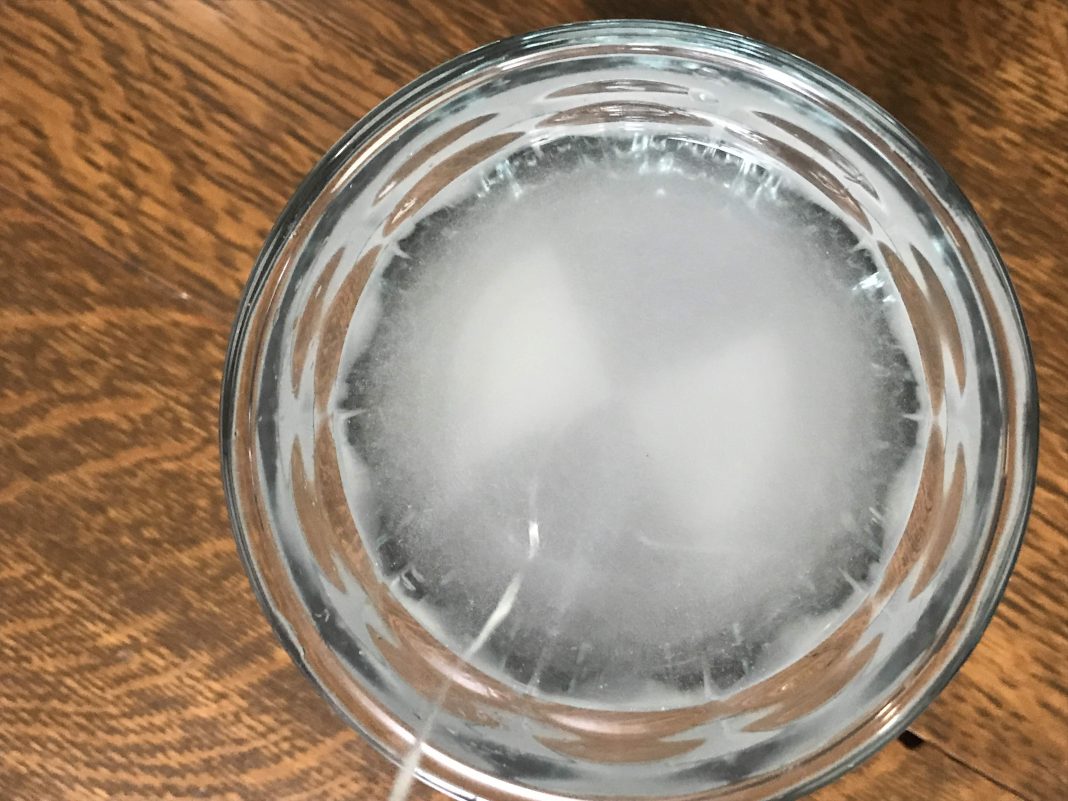Submitted by South Sound GREEN
In the face of COVID-19 and recent stay at home order, parents and guardians may find themselves looking for activities that not only keep students engaged, but also provide information about local environmental science and concerns. In our South Sound GREEN Home-Based Science Project series, we will introduce and demonstrate various hands-on and at-home activities for children of all ages to do either indoors or outside!
 This time, we explore the concept of turbidity and how to measure it with household items!
This time, we explore the concept of turbidity and how to measure it with household items!
Turbidity Trials
Grade Level: 5th-12th
Materials
- Bucket, glass, or large container (preferably clear)
- Disk*
- The disk can be made of anything that will sink in water, and can range in size from a coin to a jar lid
- Black marker (non-permanent)
- Tape
- String/Floss
- Ruler/Tape measure
- Water
- Materials to add to water: dirt, flour, gravel, sand, etc.
- Pen and paper
Background
 Last week, we talked about how important dissolved oxygen is for salmon, and why they prefer colder water over warmer water. This week, we continue to explore the impact of water quality on salmon by introducing turbidity!
Last week, we talked about how important dissolved oxygen is for salmon, and why they prefer colder water over warmer water. This week, we continue to explore the impact of water quality on salmon by introducing turbidity!
Turbidity is the measure of suspended particles in the water. Highly turbid water often appears murky or cloudy. When you hear the word turbidity, you might notice it sounds like “turbulence” or “turbine” – turbulent water often has more turbidity! That’s because water that is constantly moving or being mixed will stir up any solid material and suspend, or hold, it in the water column, making the water look cloudy and less clear. If the water were to stop moving, those materials might sink to the bottom or float to the top, and the turbidity of the water would decrease. Imagine a bottle of orange juice with pulp – if the bottle hasn’t been touched in a while, that pulp might all settle out to the bottom, but once you shake the bottle, that pulp becomes suspended in the juice. Just like that juice bottle, when rivers flow over gravel or dirt, it can stir up a lot of that material and make the water look “dirty”.
Turbidity is also influenced by how much material there is in the water and what kind of material it is, from tiny rocks to algae. Smaller particles are generally lighter than larger particles, so small particles like sand may take a longer time to settle in water than larger particles like gravel. This means that rivers that flow over sand and mud might have more turbidity than rivers that flow over gravel and large rocks. Water with a lot of algae in it can also be very turbid, as these algae tend to live at or near the surface of the water.
Why is turbidity important for salmon and other aquatic life? Salmon prefer clearer water over more turbid water for a variety of reasons. Salmon eggs have a permeable membrane, which allows dissolved gases, like oxygen, to move from the water to the salmon embryo. Highly turbid water can interfere with this process, and even make it harder for adult salmon to absorb dissolved oxygen through their gills. In addition to clogging gills and smothering eggs, turbidity can raise the temperature of the water, can block light limiting photosynthesis from occurring, and can degrade salmon spawning habitat.
In this activity, you are going to learn how to measure turbidity in a different way by using something called a Secchi disk. Secchi disks have a “checkerboard” design, and are lowered slowly into water until the disk can no longer be seen. Secchi disks have been used for over 150 years, and you can make one at home and test the turbidity of different materials in water!

Procedure
- Fill a large bucket, glass, or clear container with water. Keep track of how much water you add to be consistent with your experiments!
- Take your disk and, using a black marker, create the following “checkerboard” design on it. Make sure you use a non-permanent marker!
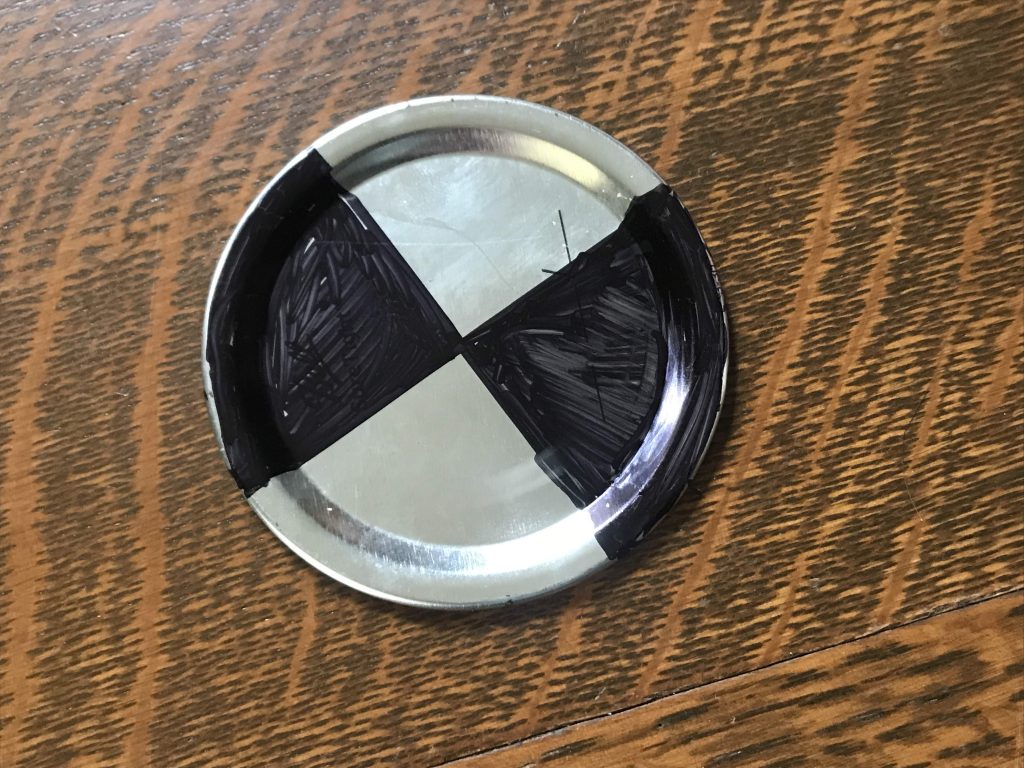
- Attach a long piece of string to the disk using a piece of tape. If possible, attach the string at the center of the disk – when you suspend the disk from the string, it should be flat, or parallel to the ground.
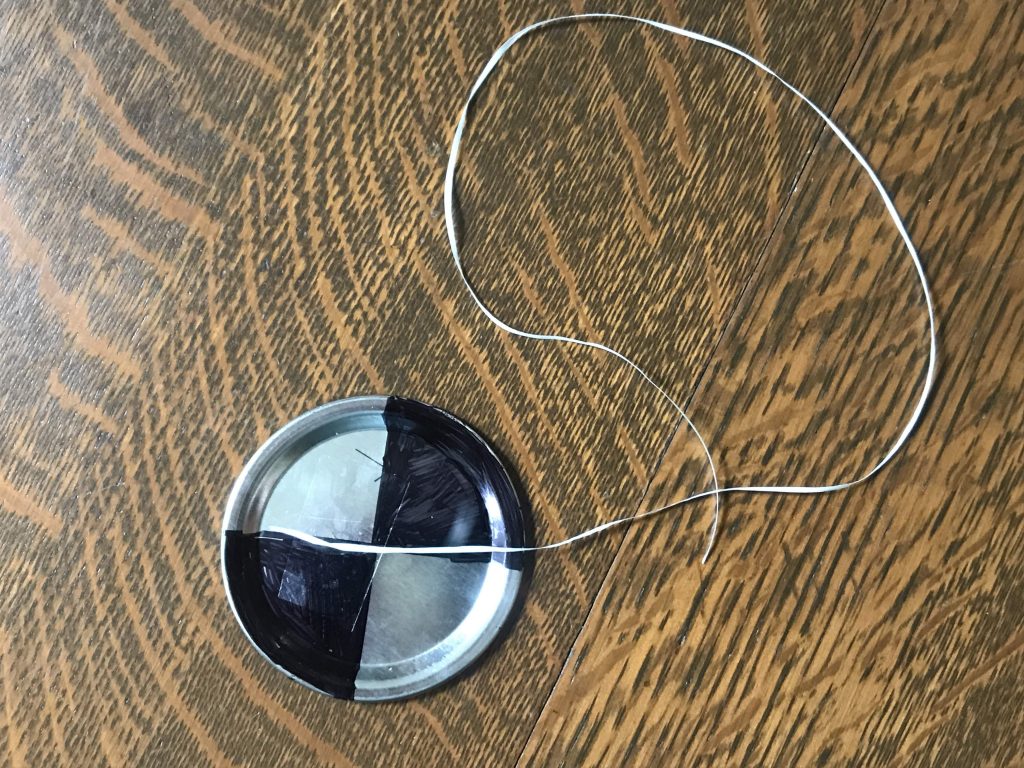
- Test your Secchi disk in your clear water. Dip your disk into the water and slowly drop it lower and lower. Keep lowering the disk until you can no longer see the pattern you created, then stop immediately.
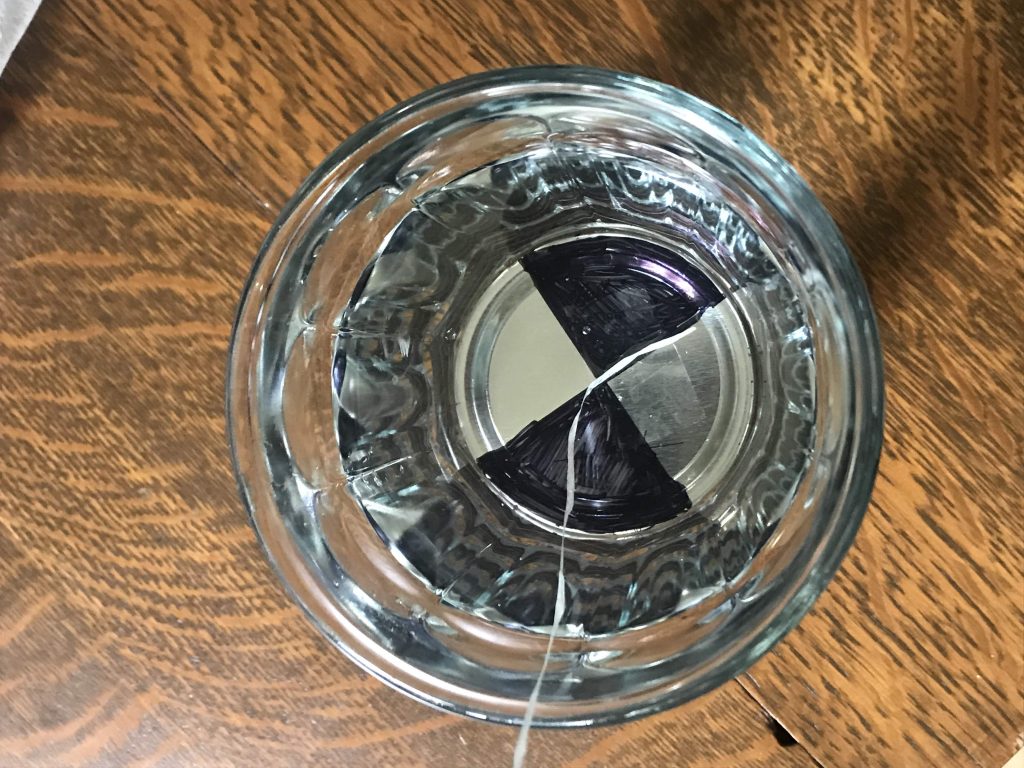
- Pull out your disk and measure the length of string that was in the water, or the length of how deep your disk went before you could no longer see it. This is your Secchi depth. The greater the Secchi depth, the lower the turbidity is in the water! Record this depth with your pen and paper.
- Add a new substance to the water – here, I’m going to start with flour. Mix the substance fully into the water. Make sure to use the same amount of substance for each test in this experiment!
- Again, dip your disk and slowly lower it into the water mixture until you can no longer see the design, then stop immediately. Pull the disk out and measure the length of string that was in the water. Did your Secchi depth change?
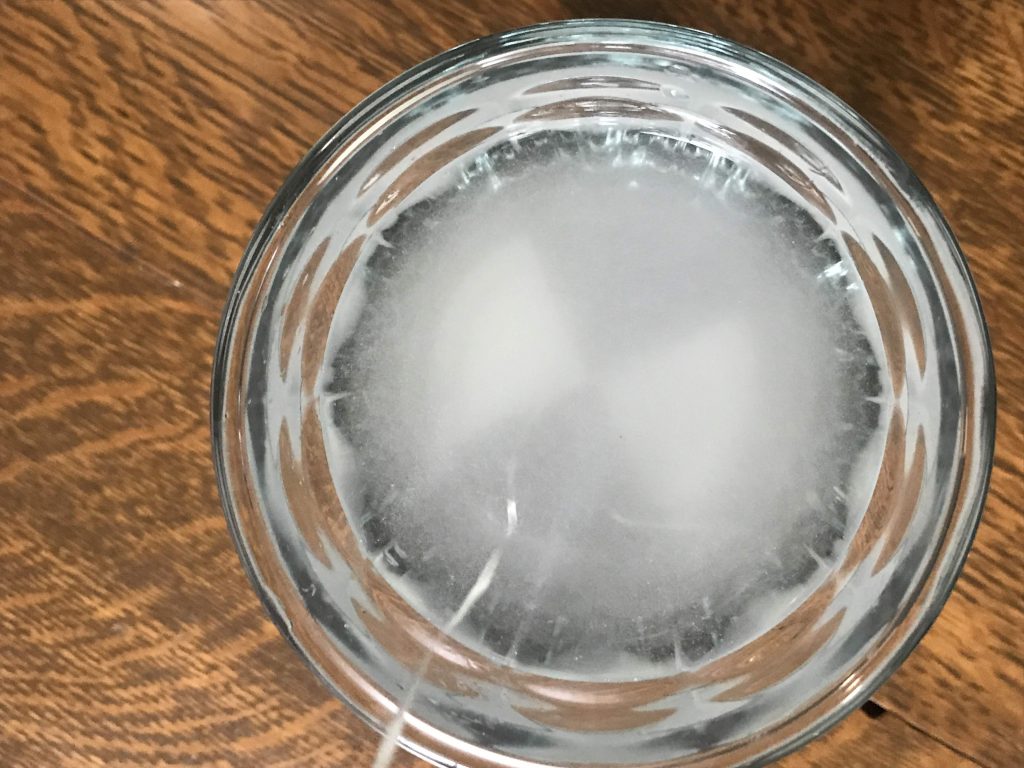
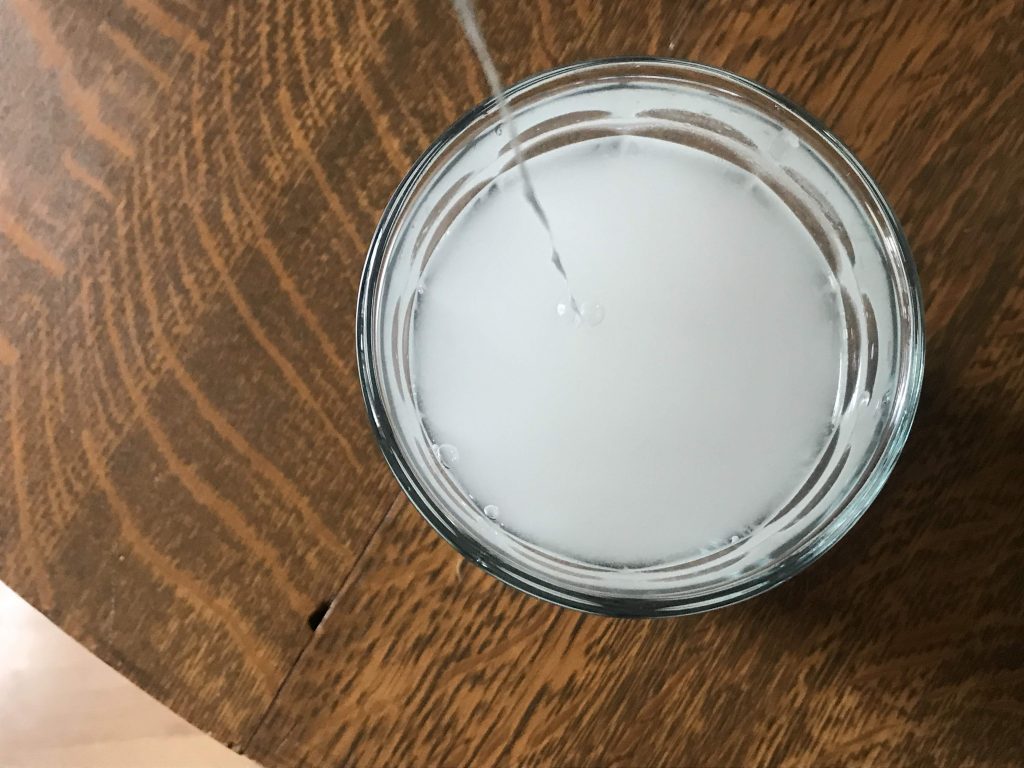
- Try the experiment again with new substances, such as dirt, sand, gravel, or other food products!
Vocabulary
- Secchi Disk: A disk with a black and white “checkerboard” pattern, used to measure the turbidity of water.
- Suspend: To move or be held within a liquid. Particles in suspension will eventually settle, or sink, over time.
- Turbidity: The measure of suspended particles in water.
- Water Column: A section of water, usually reaching from the surface of the water to the bottom of the river or lake it is in.
Keep Learning!
- Learn about turbidity measurements in our local area and find out how students measure turbidity on the South Sound GREEN website!
- Learn more about turbidity from the US Geologic Survey
- Share your results with us on Instagram! Use the hashtag #GREENfromhome or find us at @southsoundgreen.
South Sound GREEN (Global Rivers Environmental Education Network) is a watershed education program in Thurston County that educates, empowers and connects thousands of local students in watershed studies annually. Through South Sound GREEN, participants engage in science and engineering practices related to water quality in South Sound. For more information, visit southsoundgreen.org.









































